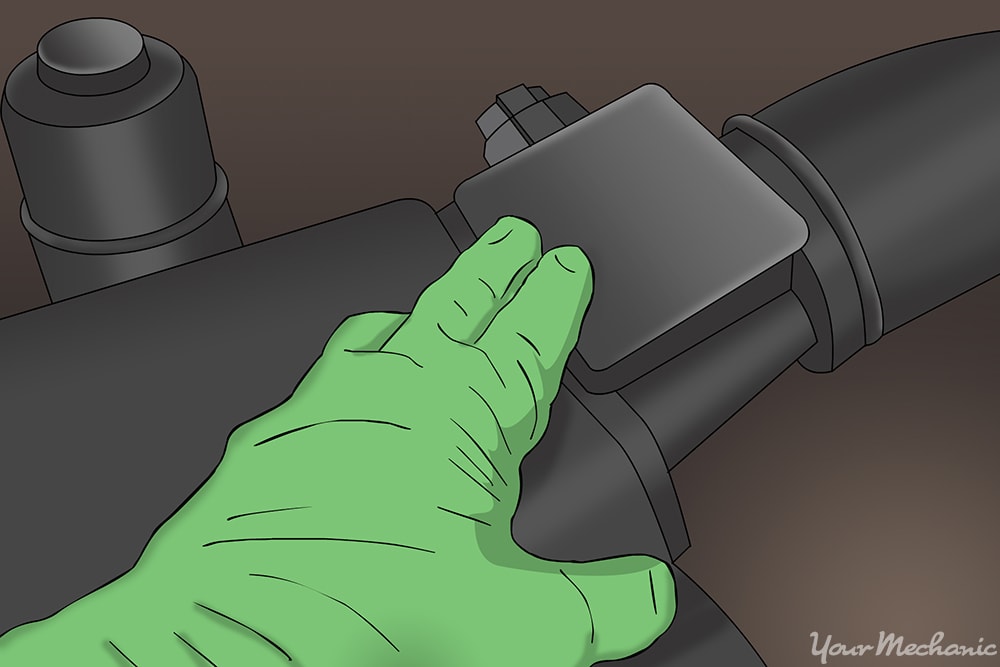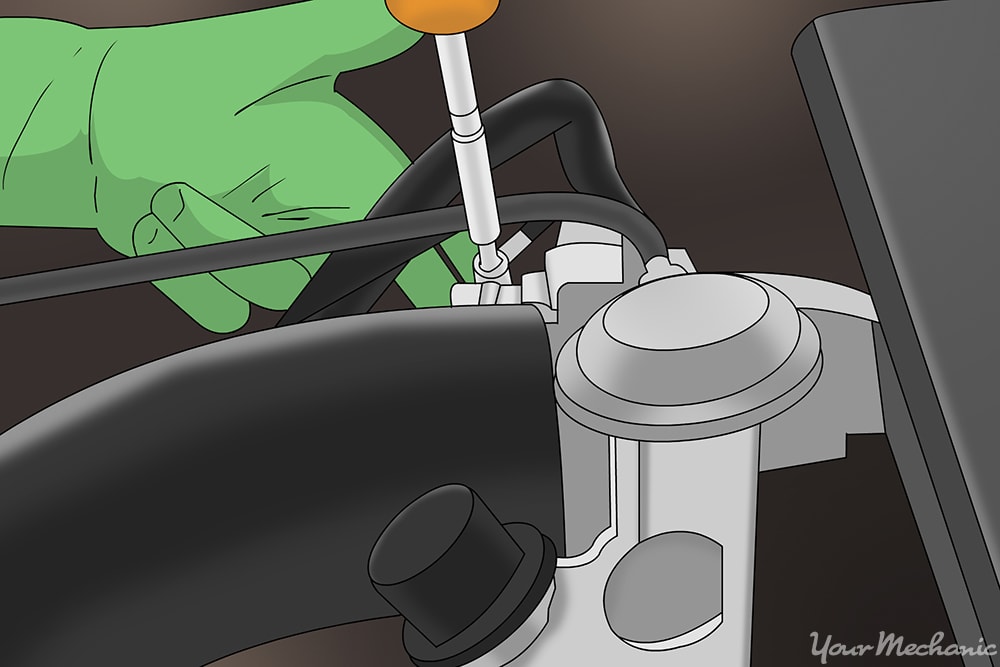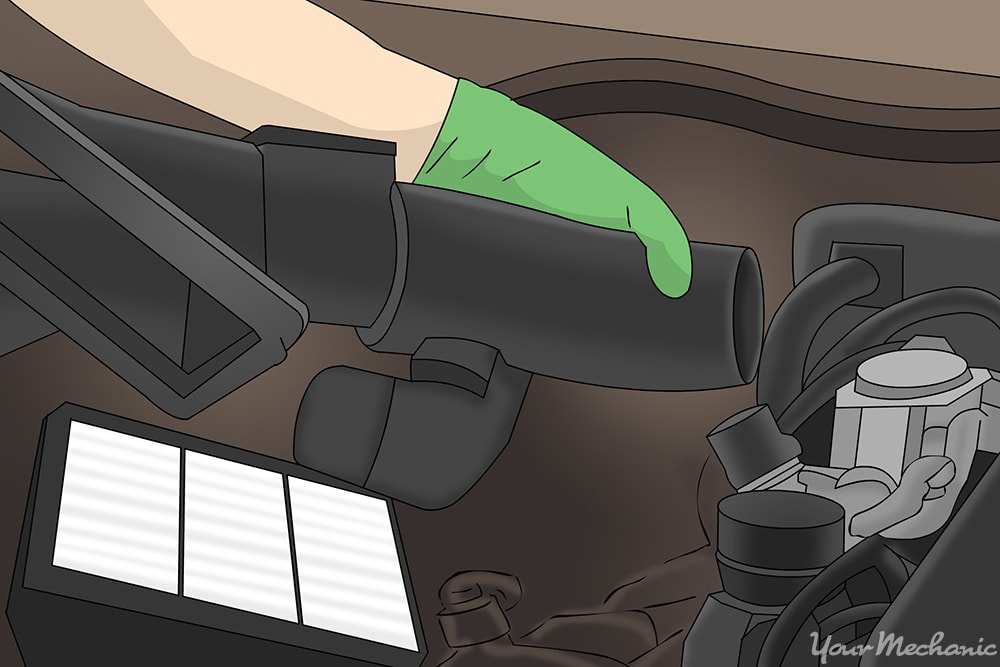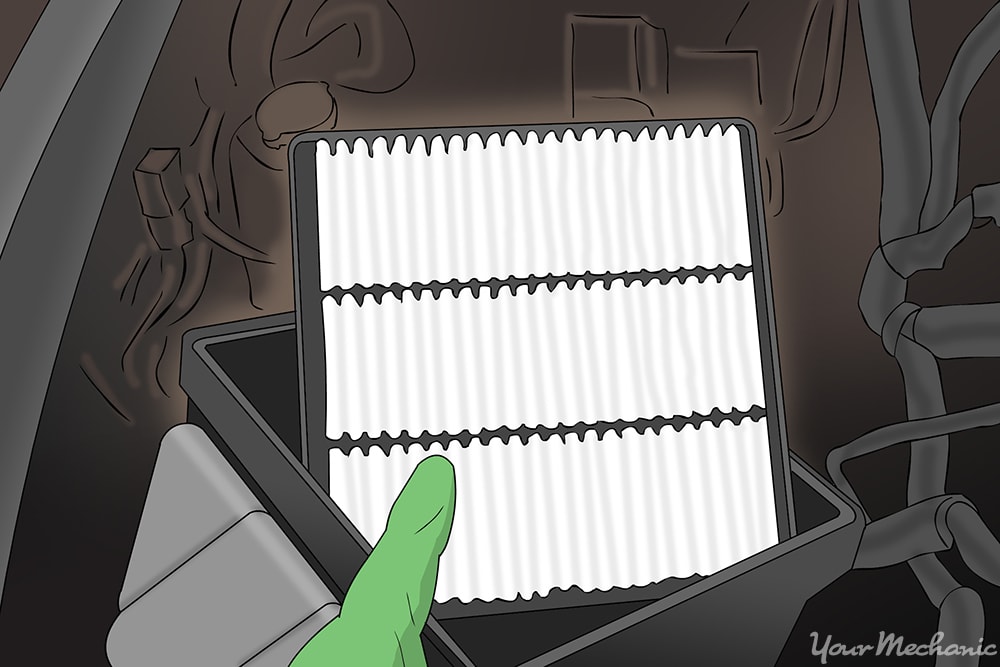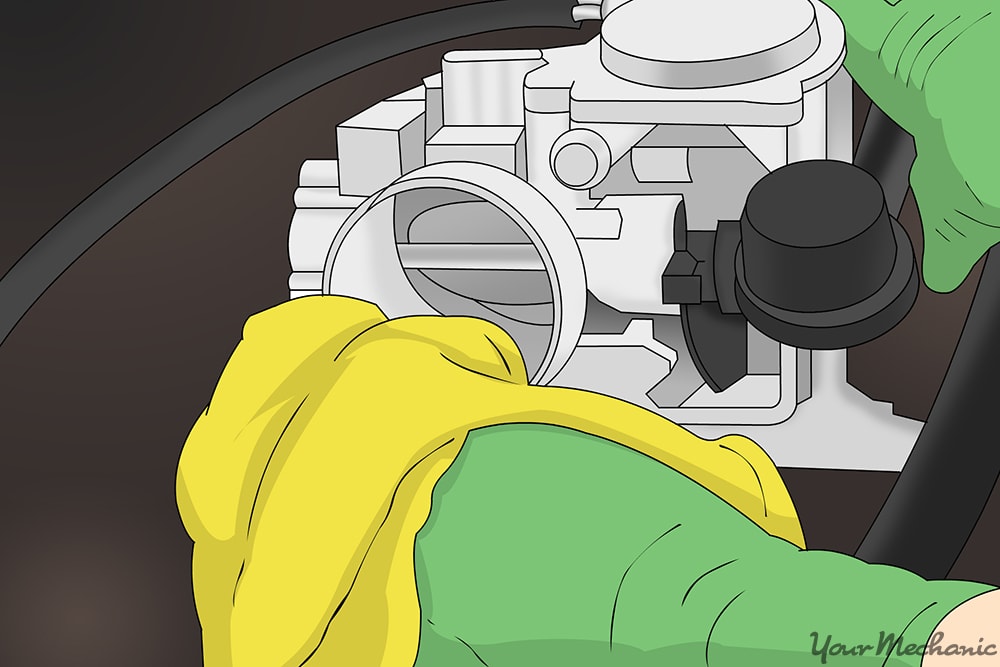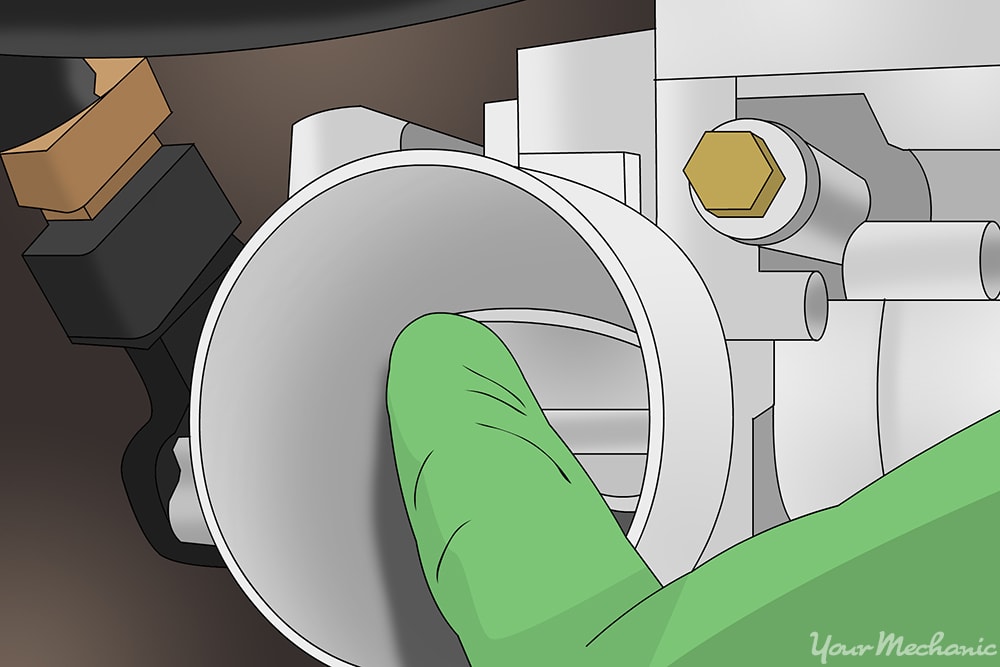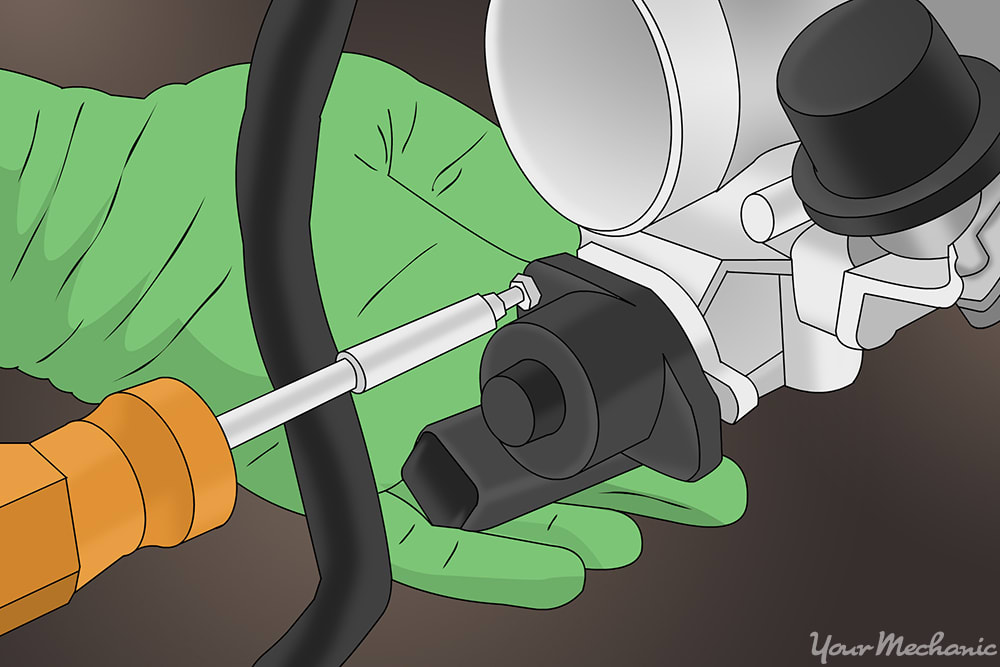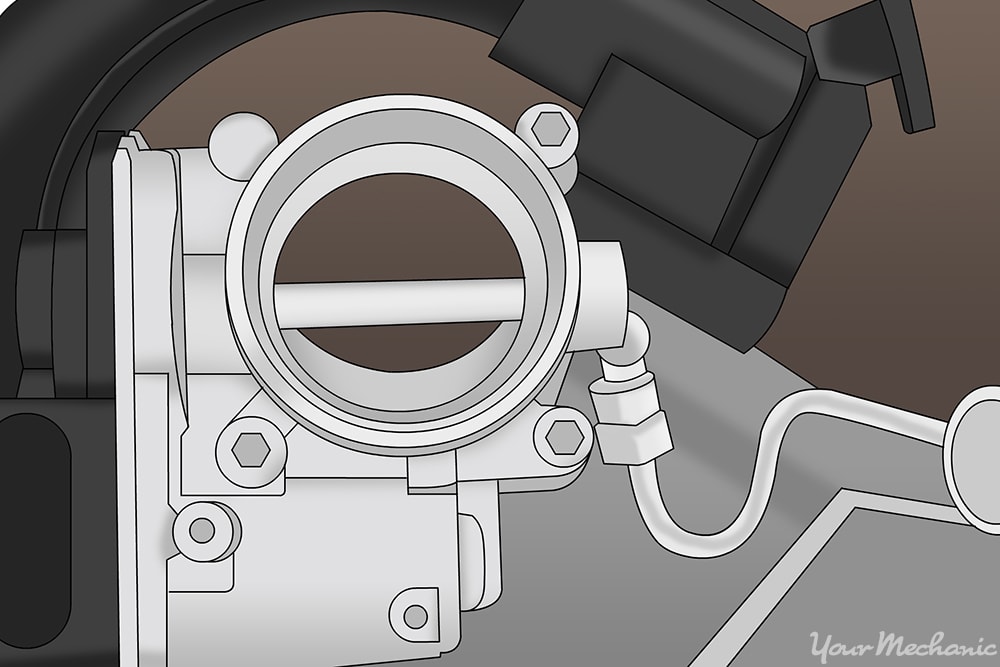

Today's fuel injected cars depend on a fully-functional and clean throttle body to supply an air/fuel mixture to each cylinder. The throttle body is essentially the carburetor on a fuel injected engine that controls flow of fuel and air into the fuel injection manifold. Once the mixture enters the manifold it is sprayed into each cylinder's intake port by the injection nozzles. When road grime, carbon, and other materials embed in the components that make up the throttle body, the vehicle's ability to efficiently burn fuel is reduced.
The throttle body has been a vital component since fuel injection systems became more popular than carburetors beginning in the early 1980's. Fuel injection systems have since then grown into finely tuned, electronically controlled and operated machines that have improved engine fuel burning efficiency by as much as 70% over the past three decades.
The throttle body hasn't changed much in mechanical design or in function since the early mechanical fuel injection systems were in use. One thing that remains important is keeping the throttle body completely clean. There are multiple methods that consumers use today to keep the fuel systems as clean.
One method is having the fuel injection system removed and physically cleaned. This is rather rare, but there are many car owners who go the extra mile to ensure that their fuel system is as efficient as possible. Typically this is done when a car owner notices that their engines are burning inefficiently as opposed to preventative maintenance.
Another method involves using fuel additives designed to clean fuel injection systems. There are dozens of fuel additives made by multiple manufacturers that claim to clean fuel injection systems ranging from injection ports to the throttle body blades themselves. However, the one reality about any additive is, if it helps one system, there is often a trade-off where it can negatively impact another. Most fuel additives are made from abrasive materials or “catalyst.” The catalyst helps fuel molecules break down into smaller, easier to burn molecule, but can cause scratching of cylinder walls and other metallic components.
A third method uses Carb cleaners or other degreasers. The correct method for cleaning a throttle body is removing it from the vehicle and cleaning it thoroughly with a special degreaser that is designed for fuel system components.
It's recommended by most automotive manufacturers to remove and clean your throttle body roughly every 100,000 miles. However, it's also a good idea to clean the throttle body while on the vehicle every 30,000 miles. By completing this routine maintenance, you'll be able to increase the engine's lifespan, improve vehicle fuel efficiency and horsepower, as well as reduce emissions.
For purposes of this article, we'll focus on the recommended methods for cleaning the throttle body while still installed on your engine at 30,000 miles. For tips on removing and cleaning the throttle body, which includes removing this component from your vehicle's engine and the proper methods used for cleaning and rebuilding the throttle body, refer to your vehicle's service manual.
Part 1 of 3: Understanding the symptoms of a dirty throttle body
A dirty throttle body typically restricts the flow of air and fuel into the engine. This can result in symptoms that can impact the overall operation of your vehicle. Some of the more common warning signs that you have a dirty throttle body that requires cleaning may include the following:
The vehicle has trouble shifting into higher gears: Believe it or not, a dirty fuel injection system typically impacts the shifting of the vehicle first. Today's engines are extremely fine-tuned and frequently monitored by on-board sensors and computer systems. When the throttle body is dirty, it lowers the engine RPM band, causing the engine to stumble and delay the time that the vehicle is supposed to shift into a higher gear.
The engine idle is rough: Typically a dirty throttle body also impacts the way the engine idles. This is commonly due to the excess of carbon build-up on the throttle blades on the throttle body or on the body housing. The only way to remove this carbon build up is to physically clean the throttle body.
Engine stumbles through acceleration: Most of the time, when the throttle body is dirty or clogged with excess carbon, the fuel flow and engine harmonics are negatively impacted. When an engine accelerates, it is tuned to increase RPM at a rate that applies engine horsepower efficiently to supporting systems, like the transmission and drive axles. When the throttle body is dirty, this harmonic tuning is rough and the engine stumbles as it goes through the power band.
Check engine light comes on: In some instances the dirty fuel injector throttle body triggers a few of the sensors on the fuel injection system. This illuminates warning lights such as "Reduced Power" and/or "Check Engine.” This alsos store an OBD-II error code inside the vehicles' ECM that needs to be downloaded by a professional mechanic with the right diagnostic scan tools.
These are just a few of the common warning signs that the throttle body is dirty and needs to be cleaned. On most occasions, you can clean the throttle body while still installed on the vehicle. However, if your throttle body is 100% electronically controlled, you need to be very cautious about trying to clean the inner throttle body blades. Electronically controlled throttles are highly calibrated; and when people try to clean the blades manually, the throttle body blades typically fall out of calibration. It is recommended to have a certified mechanic complete your throttle body cleaning if you have a full electronic operated throttle body.
As stated above, in this article, we will be providing some tips on how to clean the throttle body while it is still installed on your vehicle. This is for a throttle body that is mechanically operated by a throttle cable.
Electronic throttle body systems should be removed before cleaning. Please refer to your vehicle service manual for precise steps on repairing some of these trouble issues; but always defer to the judgment of an experienced ASE certified mechanic for cleaning an electronic controlled throttle body.
Part 2 of 3: Cleaning the throttle body while on the vehicle
In order to clean the throttle body while it's still installed on your engine, you’ll want to determine if the throttle body is manually operated with a throttle cable. On older vehicles, the throttle body of a fuel injected engine is operated by a throttle cable that is either attached to the gas pedal or to an electronic throttle control.
The reason you need to consider this fact first is because electronic throttle bodies are calibrated with incredibly tight clearance on the throttle blades. When you manually clean the throttle body, you'll be cleaning the blades themselves. This can cause the electronic throttle body not to operate correctly. It is recommended you remove the throttle body from the vehicle and clean it or have a professional mechanic complete this service for you.
Make sure to verify with your owner’s manual or service manual that your throttle body is controlled by a manual cable before trying to clean the part while on the vehicle. If it's electric, either remove it to clean or contact an ASE certified mechanic to complete this project for you.
Materials Needed
- 2 cans of throttle body cleaner
- Clean shop rags
- End wrench set
- Gloves
- Replacement air filter
- Screwdrivers, flat and Phillips head
Socket set and ratchet
Note: Put on gloves to protect your hands.
Step 1: Remove the battery cables. When you work under the hood of your vehicle, you'll be close to electrical connections.
Always remove the battery cables from the battery terminals before you remove any other components.
Step 2: Remove the air filter cover, mass air flow sensor, and intake tube. Remove the clips holding the air filter housing onto the base.
Remove the connection or clips securing the mass air flow sensor to the lower intake hose.
Step 3: Remove the air intake hose from the throttle body. Once the other air intake hoses have been loosened, you'll need to take the air intake hose connection off the throttle body.
Typically this connection is secured by a hose clamp. Loosen the hose clamp until the intake hose slips off the outer lip of the throttle body.
Step 4: Remove complete air intake housing from the vehicle. After all the connections are loose, you'll need to remove the entire air intake housing from the engine compartment.
Place it aside for now, but keep it handy since you'll need to reinstall it after the throttle body has been cleaned.
Step 5: Replace the air filter. Most of the time, the issues that are caused by a dirty throttle body may also be due to a dirty air filter.
It's a good idea to install a new air filter anytime you clean the throttle body. This ensures that your engine has the opportunity to run at full efficiency once the cleaning job is done. Check your vehicle service manual for the recommended replacement air filter.
Step 6: Cleaning your throttle body. The process of cleaning your throttle body while on the car is rather simple.
Although each throttle body is unique for the manufacturer and model of car, the steps for cleaning it are similar.
Spray throttle body cleaner inside the throttle body intake: before you start to clean the throttle body with the rag, you want to completely spray the throttle body blades and the housing with plenty of throttle body cleaner.
Let the cleaner soak in for a minute or two. Spray throttle body cleaner on a clean shop rag and clean the inside of the throttle body. Start by cleaning the inner housing and wipe the rag along the entire surface.
Open the throttle blades with the throttle control. Wipe the inside and outside of the throttle blades carefully but aggressively enough to remove carbon build-up.
Continue to add throttle body cleaner if the rag begins to dry or there is excess carbon build up.
Step 7: Inspect the edges of the throttle body for wear and carbon buildup. After cleaning the throttle body housing, inspect the inner throttle blade and clean the edges of the blade.
In many cases, this is what causes the throttle body to work poorly, but is missed by many DIY mechanics.
Also, inspect the edges of the throttle body blades for pits, nicks, or damage. If it's damaged, consider replacing this part while you have access to the blades.
Step 8: Inspect and clean the throttle control valve. While you're working on the throttle body, it's a good idea for you to remove and inspect the throttle control valve.
To do this, refer to your service manual for exact instructions. Once the throttle control valve has been removed, clean the inside housing the same way you cleaned the throttle body. Reinstall the throttle control valve after cleaning.
Step 9: Reinstall components in reverse order of removing. After the throttle control valve and throttle body are clean, install everything and test the operation of the throttle body.
Installation is in reverse steps of the removal for your individual vehicle but should follow these guidelines. Attach air intake hose to throttle body and tighten, and attach the mass airflow sensor. Install air filter housing cover and reconnect battery cables.
Part 3 of 3: Testing the throttle body operation after cleaning
Step 1: Start the engine. You shouldn't have any problems starting the engine.
You might see some white smoke come out of the exhaust at first. This is due to the excess throttle body cleaner inside the intake.
Make sure the engine idle is smooth and consistent. During your cleaning, it may be possible that the throttle blades fell out of adjustment slightly. If this is the case, there is an adjustment screw on the throttle body that will adjust the idle manually.
Step 2: Drive the vehicle. Make sure engine climbs up the RPM band when you test drive the vehicle.
If you were having problems with shifting, check this function of the vehicle during your test drive. Test drive the vehicle for 10 to 15 miles and make sure to test drive on a highway and set the cruise control to verify that this system works correctly.
If you've completed all of these checks and still can't find out the source of the problem or need an extra set of professional hands to help fix the problem, have one of YourMechanic’s local, ASE certified mechanics clean the throttle body for you.



